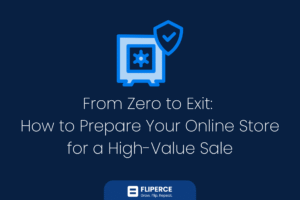Upselling and cross-selling are two powerful strategies that help businesses increase revenue and enhance the customer experience without acquiring new customers. Upselling encourages customers to upgrade to higher-value products or services, while cross-selling introduces complementary items to boost the overall value of the purchase. By leveraging customer data and understanding their preferences, these techniques offer an opportunity to maximize profitability and deepen customer relationships. When executed effectively, upselling and cross-selling can lead to significant sales growth and improved customer loyalty.
The Psychology Behind Upselling and Cross-Selling
Upselling and cross-selling are proven techniques rooted in customer psychology that can effectively boost sales. Below are some key psychological factors that make these strategies successful:
- Fear of Missing Out (FOMO):
- Customers are more likely to opt for product upgrades (upselling) or purchase complementary items (cross-selling) when they feel they might miss out on a special offer or added value. Offering time-limited promotions or showcasing premium versions with enhanced features creates a sense of urgency and increased perceived value.
- Simplifying the Decision-Making Process:
- In a world full of choices, customers often experience decision fatigue. Well-timed upselling and cross-selling suggestions simplify decision-making and improve the shopping experience. For example, offering related accessories at the time of purchase makes it easier for customers to add them without overthinking, increasing the likelihood of additional sales.
- Personalization and Data-Driven Insights:
- Leveraging customer data and analyzing buying behavior allows businesses to personalize upselling and cross-selling offers. When customers feel that a suggestion is explicitly tailored to their needs, they are more likely to accept it. This smart approach boosts sales, enhances the customer experience, and fosters long-term loyalty.
By utilizing these psychological triggers and implementing data-driven strategies, businesses can maximize sales opportunities and encourage deeper customer engagement.
The Benefits of Upselling and Cross-Selling
Upselling and cross-selling are not just simple sales tactics; they are powerful pillars of a business growth strategy. When applied correctly and intelligently, these techniques deliver remarkable results, from boosting revenue to enhancing customer experiences.
- Significant Increase in Average Order Value (AOV):
- The most immediate and impactful benefit of upselling and cross-selling is the increase in average order value. Encouraging customers to purchase upgraded products or add complementary items drives higher spending per transaction. These strategies maximize the revenue potential of each sale without the need for costly customer acquisition efforts.
- Enhanced Customer Satisfaction and Strengthened Loyalty:
- One of the most powerful outcomes of upselling and cross-selling is the ability to increase customer satisfaction. When you suggest products that genuinely complement the customer’s purchase or offer a superior product experience, the customer feels understood and valued. For example, offering an extended warranty for a device or recommending a high-quality accessory (cross-selling) improves their purchase experience and makes them feel more secure. Satisfied customers are more likely to return and develop a deeper loyalty to your brand.
- Smart Use of Customer Data and Personalization:
- Upselling and cross-selling rely heavily on understanding customer data and behavior. By leveraging insights from previous purchases and customer preferences, you can offer perfectly timed, personalized recommendations that meet their specific needs. This data-driven approach leads to higher conversion rates, as customers are more likely to accept suggestions that align with their preferences, making them feel as though their experience is customized just for them.
- Increased Profit Margins Without Extra Costs:
- Selling higher-end products or offering complementary items with high-profit margins directly increases overall profitability without additional marketing expenses. Upselling and cross-selling allow businesses to maximize revenue per customer by introducing products with better margins. For example, offering premium versions or profitable add-ons can significantly boost profits without needing more resources or higher costs.
By incorporating upselling and cross-selling into your sales strategy, businesses can increase short-term revenue and foster long-term customer relationships. When these techniques are executed properly, they improve sales and build lasting trust and loyalty, paving the way for long-term success.
Effective Upselling and Cross-Selling Techniques
To truly maximize the potential of upselling and cross-selling, it’s essential to implement the right strategies at the right time. When applied effectively, these tactics not only increase sales but also enhance the overall customer experience.
- Timing is Everything:
- One key to successful upselling and cross-selling is perfect timing. Offering an upsell or cross-sell too early can overwhelm the customer while introducing it too late might result in missed opportunities. The best time to present an upsell is when the customer is already committed to purchasing a product, such as at the checkout stage. Cross-selling, however, works well when introduced naturally during the shopping process, especially if the products are highly relevant to what the customer is already considering.
- Keep It Relevant:
- The effectiveness of upselling and cross-selling lies in the relevance of the offer. If the additional product or upgrade doesn’t add value to the customer’s experience, it’s likely to be ignored. For example, when upselling, focus on products that offer clear benefits or features superior to the customer’s original choice. Similarly, in cross-selling, suggest items that are directly related to the main purchase, such as recommending a phone case or screen protector when a customer buys a smartphone.
- Use Visual Cues and Persuasive Copy:
- Effective upselling and cross-selling strategies often involve using visual solid cues and persuasive copy. Highlight the value of the upsell or cross-sell with visual comparisons that show the customer exactly what they are gaining by opting for a more expensive product or additional item. Use concise and compelling copy emphasizing benefits, such as “Protect your investment with this extended warranty” or “Complete your purchase with these must-have accessories.”
- Price Anchoring:
- Price anchoring is a powerful technique in upselling and cross-selling. By showing the customer a higher-priced item first, you make the next option seem more affordable by comparison. For example, if you first present a luxury version of a product and then suggest a slightly more affordable version, the second product feels like a better deal, even if it’s more expensive than the original choice.
- Personalization through Data:
- Leveraging customer data is crucial for making upselling and cross-selling feel personal and tailored. Use insights from past purchases or browsing behavior to offer products that the customer is likely to find relevant and valuable. Personalization increases the likelihood of acceptance because it feels like the recommendation was made specifically for them, not a generic offer.
By incorporating these techniques into your sales process, you can ensure that upselling and cross-selling efforts are more effective and contribute to a better overall customer experience, leading to increased satisfaction and loyalty.
Effective Cross-Selling Techniques
Cross-selling is a powerful strategy for increasing sales and enhancing the customer experience. When executed effectively, it can drive both revenue and customer satisfaction. Here are several key techniques for successful cross-selling:
- Bundle Complementary Products:
One of the most effective ways to implement cross-selling is by offering complementary product bundles. This not only increases the value of the purchase but also simplifies the customer’s decision-making process. For example, if a customer is purchasing a camera, suggesting a bundle that includes a camera bag, extra battery, and lens cleaner can improve their shopping experience while boosting the overall transaction value.
- Leverage Purchase History:
Analyzing customers’ past purchases allows you to tailor cross-selling offers. If a customer recently bought a laptop, recommending accessories like an external hard drive or laptop stand is likely to be more appealing. Personalized offers based on previous behavior increase the likelihood of successful cross-sales because they align with the customer’s specific needs.
- Cross-Sell at Checkout:
The checkout phase is a prime moment for upselling and cross-selling. At this stage, customers are committed to making a purchase, so offering small, relevant products feels like a natural extension. For example, suggesting socks or insoles alongside a pair of running shoes at checkout can lead to higher conversion rates, as the customer is already in a buying mindset.
- Create a Sense of Urgency:
Creating urgency can significantly enhance cross-selling efforts. Limited-time offers like “Add this item now and save 20%” encourage immediate action and increase the chances of the customer making an additional purchase.
- Highlight Customer Reviews:
Using customer reviews and recommendations alongside cross-sell products can build trust and credibility. For instance, if a customer is purchasing a smartphone, showcasing positive reviews for a protective case can convince them to add it to their cart.
When applied thoughtfully, these cross-selling techniques not only boost immediate sales but also enhance the overall shopping experience, fostering long-term customer loyalty.
Common Mistakes to Avoid in Upselling and Cross-Selling
While upselling and cross-selling can be powerful tools for increasing revenue, there are several common mistakes businesses make that can have the opposite effect. Avoiding these pitfalls is crucial to maintaining customer trust and ensuring successful execution of these strategies.
- Being Too Aggressive:
One of the biggest mistakes in upselling and cross-selling is overwhelming customers with too many suggestions. If the offers come across as pushy or irrelevant, it can create a negative experience and drive customers away. It’s important to strike the right balance by offering products that genuinely complement the customer’s purchase and enhance their shopping experience.
- Offering Irrelevant Products:
Relevance is key when it comes to upselling and cross-selling. Offering products that don’t align with the customer’s current purchase or needs can confuse and frustrate them. For instance, suggesting a luxury item when the customer is clearly on a budget can backfire. Ensure that the additional products or upgrades are appropriate and add value to the customer’s original choice.
- Ignoring Customer Data:
Failing to leverage customer data is a missed opportunity in upselling and cross-selling. Personalized offers based on past purchases, browsing history, or preferences are more likely to be successful. Without analyzing customer data, businesses may end up offering irrelevant or ill-timed products, reducing the chances of a successful upsell or cross-sell.
Avoiding these common mistakes ensures that upselling and cross-selling enhance the customer experience, increase satisfaction, and ultimately boost long-term loyalty and revenue.
Using Data and Analytics to Improve Upselling and Cross-Selling
Leveraging customer data and analyzing purchasing behavior can significantly enhance the effectiveness of upselling and cross-selling. Businesses that effectively utilize these tools can deliver more targeted and personalized offers, ultimately leading to increased sales and customer satisfaction.
- Personalizing Offers Using Data:
By analyzing past purchases, browsing history, and customer preferences, you can tailor upselling and cross-selling offers to match the customer’s specific needs and interests. This personalization makes customers feel that the recommendations are designed specifically for them, increasing the likelihood of acceptance. For example, if a customer has previously purchased a laptop, suggesting a laptop bag or external hard drive would be a relevant and useful cross-sell.
- Predicting Purchasing Behavior:
Data analytics tools can help predict future customer purchasing behavior. By using machine learning models and analyzing past patterns, businesses can suggest the right products at the right time. This predictive approach makes upselling and cross-selling smarter and more efficient, resulting in better sales outcomes.
- Enhancing the User Experience:
Data also allows businesses to identify weaknesses in their upselling and cross-selling process and make necessary adjustments. For instance, if you notice many customers rejecting offers at a particular stage, you can optimize the content or timing of your suggestions to improve conversion rates.
Using data and analytics not only boosts the effectiveness of upselling and cross-selling, but it also improves the overall customer experience, leading to higher satisfaction and loyalty in the long term.
Upselling and Cross-Selling in the Digital Age
In the digital age, upselling and cross-selling have become more advanced thanks to new technologies and tools that allow for smarter, more efficient strategies. E-commerce platforms, AI-driven personalization, and automation have transformed how businesses approach these tactics, making them more effective than ever.
- AI-Powered Personalization:
Artificial intelligence has revolutionized upselling and cross-selling by enabling real-time personalization. AI analyzes customer behavior, preferences, and purchasing history to deliver highly relevant product recommendations. This results in higher conversion rates because the suggestions are more aligned with customer needs, increasing the likelihood of additional purchases.
- Automation for Seamless Offers:
Automation tools have made upselling and cross-selling smoother and less intrusive. Automated systems can trigger personalized offers at the perfect moment, such as during checkout or when browsing related products. These seamless offers are presented without overwhelming the customer, ensuring a positive shopping experience while boosting sales.
- Data-Driven Insights:
The digital age allows businesses to gather more data than ever before, providing valuable insights into customer preferences and behavior. This enables businesses to fine-tune their upselling and cross-selling strategies, ensuring the right products are offered at the right time for maximum impact.
Incorporating AI, automation, and data-driven insights into upselling and cross-selling strategies not only enhances effectiveness but also creates a more personalized and seamless shopping experience for customers.
Measuring Success: KPIs for Upselling and Cross-Selling
To ensure the effectiveness of your upselling and cross-selling strategies, it’s essential to track the right key performance indicators (KPIs). These metrics will provide valuable insights into how well your tactics are working and where improvements are needed.
- Average Order Value (AOV):
A key metric for evaluating upselling and cross-selling success is the average order value. If your AOV increases over time, it indicates that customers are purchasing more expensive items or adding complementary products, which is a direct result of successful upselling and cross-selling.
- Conversion Rate of Upsells and Cross-Sells:
Monitoring the conversion rates of upselling and cross-selling offers is crucial. This metric helps you understand how many customers are accepting your recommendations. A higher conversion rate suggests that your offers are relevant and well-timed, while a lower rate may indicate that adjustments are needed in your approach.
- Customer Lifetime Value (CLTV):
Effective upselling and cross-selling not only increase short-term revenue but also contribute to a higher customer lifetime value. By tracking CLTV, you can measure how these strategies impact long-term customer loyalty and recurring purchases.
By focusing on these KPIs, businesses can continuously optimize their upselling and cross-selling strategies, ensuring sustained growth and improved customer satisfaction.
Integrating Upselling and Cross-Selling into Your Sales Strategy
Successfully integrating upselling and cross-selling into your sales strategy requires a thoughtful approach. These techniques should not be viewed as mere add-ons but as essential components of your overall business model, aimed at enhancing both revenue and customer experience.
- Seamless Integration with Customer Journeys:
The most effective upselling and cross-selling strategies are those that feel natural within the customer journey. Whether it’s through personalized product recommendations during browsing or relevant add-ons at checkout, these offers should enhance the customer’s experience without feeling pushy. Timing is crucial—well-timed suggestions can significantly increase the likelihood of acceptance.
- Training Sales Teams and Automating Processes:
For businesses that rely on in-person interactions, it’s essential to train sales teams to use upselling and cross-selling effectively. They should understand when and how to introduce additional products without overwhelming the customer. For online businesses, automation tools can seamlessly handle these tasks by offering personalized recommendations based on customer behavior.
- Continuous Optimization:
Like any part of a sales strategy, upselling and cross-selling require continuous monitoring and optimization. Analyzing customer feedback, conversion rates, and overall sales performance will help you refine your approach and ensure these strategies remain effective over time.
By integrating upselling and cross-selling thoughtfully and optimizing regularly, businesses can drive sustainable growth while enhancing the customer experience.
In conclusion, upselling and cross-selling are essential strategies that go beyond short-term revenue gains. When executed with relevance and timing, they not only increase the average order value but also enhance the overall customer experience. By offering personalized, data-driven recommendations, businesses can show that they understand and care about their customers’ needs, leading to a more positive shopping experience. This, in turn, fosters trust and satisfaction, which are crucial for building long-lasting relationships with customers.
Over time, thoughtful upselling and cross-selling efforts can significantly boost customer loyalty and lifetime value. Customers who feel that their needs are met through relevant product suggestions are more likely to return for future purchases and recommend the brand to others. By continuously optimizing these strategies and integrating them into the customer journey, businesses can drive sustainable growth and achieve long-term profitability.




